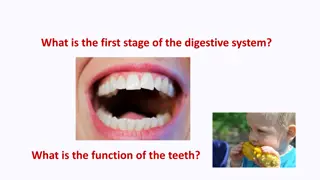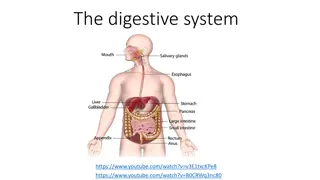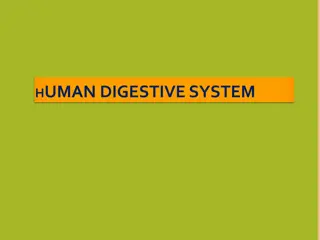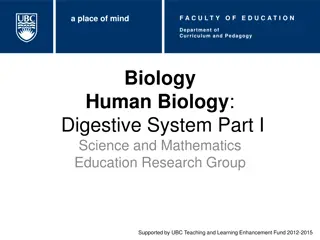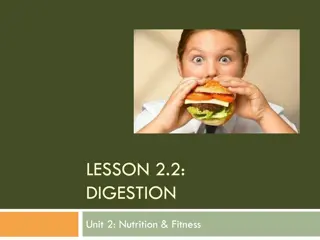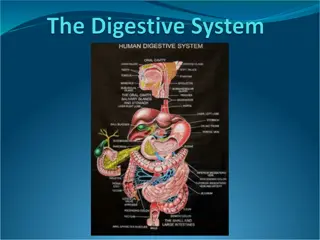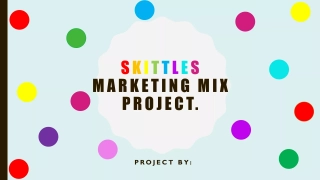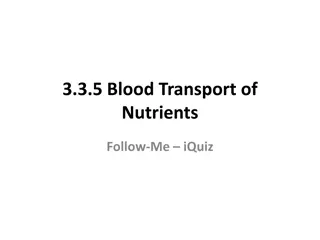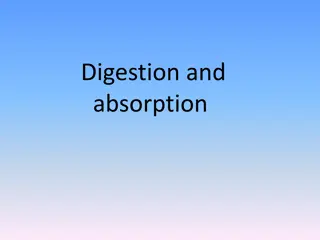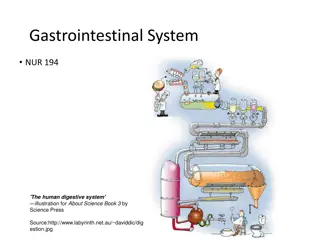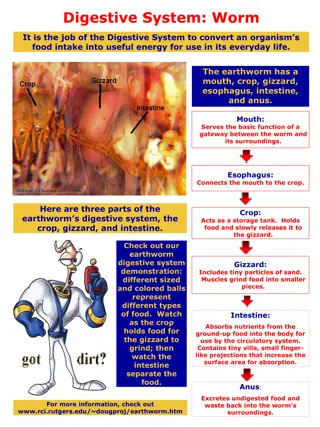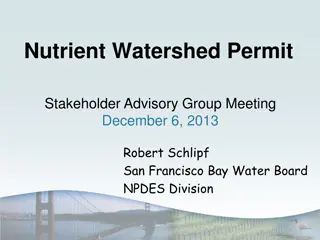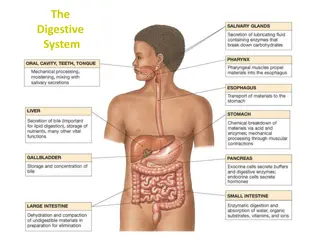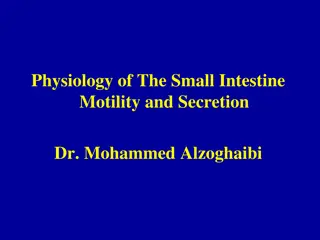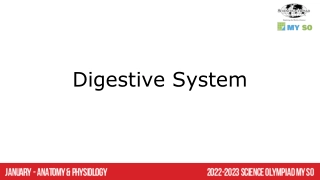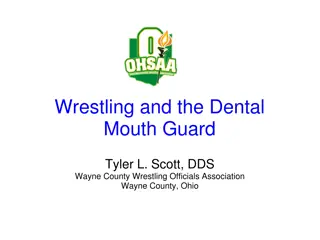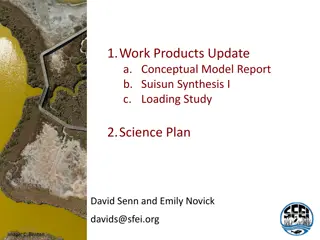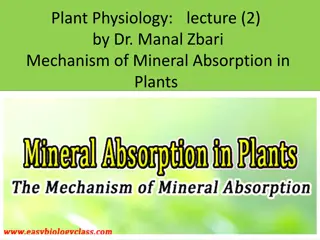The Digestive Journey: From Skittles in the Mouth to Nutrient Absorption in the Intestine
The process begins with chewing skittles in the mouth, where salivary amylase breaks down sugar. The bolus then travels down the esophagus via peristalsis into the stomach, further broken down by gastric juice. The pancreas releases enzymes like amylase and lipase to digest sugars and fats. Bile produced by the liver helps break down fats, and the small intestine absorbs nutrients with the help of villi and microvilli. This intricate journey showcases how food is broken down into essential nutrients.
Download Presentation

Please find below an Image/Link to download the presentation.
The content on the website is provided AS IS for your information and personal use only. It may not be sold, licensed, or shared on other websites without obtaining consent from the author. Download presentation by click this link. If you encounter any issues during the download, it is possible that the publisher has removed the file from their server.
E N D
Presentation Transcript
When you put skittles in your mouth the mouth starts chewing it and breaks it down. Using Salivary amylase it can break down sugar into the ions that we need. Mucins helps to hold chewed food together Then the tongue helps to push the food down the Esophagus
It is the long and narrow tube that connects the Mouth and the stomach When skittles are going down the Esophagus it mixes with saliva and makes bolus Peristalsis in the esophagus moves food from the mouth to the stomach.
Then it proceeds to the stomach where its broken down even more. Skittles are broken down to get the sugar needed from them. Gastric glands within the stomach produce secretions called gastric juice which help the process of breaking down food. The muscular walls of the stomach contract to mix food with gastric juice, producing a mixture called chyme.
When food reaches the pancreas it uses the exocrine gland to make pancreatic juice. The pancreas also uses the endocrine gland to produce insulin. The pancreas uses a lot of enzymes 2 of which are. Pancreatic amylase digests sugar to maltose. And Lipase digests fats to fatty acids.
The liver produces bile which is stored in gallbladder and sent to the duodenum through a duct. Bile breaks fats so they can mix with water and then liver produces enzymes to finish them. So skittles get broken down in bile then liver takes Ammonia produced by the digestion of proteins is converted to a less toxic compound the liver.
there are numerous ridges called villi that function to increase the surface area of the intestine. Individual villus cells have microvilli which greatly increase absorptive surface area. So when the skittles pass through the small intestine it uses villus to become bigger. Using Peptidases complete the digestion of peptides to amino acids. And using Maltase completes the digestion of disaccharides.
The large intestine also absorbs sodium and other ions but it excretes other metallic ions into the wastes. It absorbs vitamin K produced by colon bacteria. So after all the protein is taken from skittles the metallic waste is then thrown out of the body.




